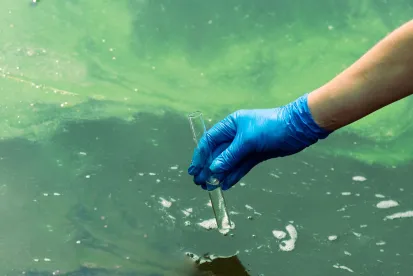On 9 June 2022, the U.S. Environmental Protection Agency (EPA) published in the federal register a proposed rule regarding the Clean Water Act (CWA) Section 401 water quality certification process (the Proposed Rule), undoing many of the Trump administration’s changes to that process in 2020.1 While the Proposed Rule seeks to return regulatory authority to states and tribes in a manner more aligned with the agency’s Section 401 certification rules in existence prior to the Trump administration’s rule, expanded state and tribal authority under the Proposed Rule could be used to block or delay development projects at a time when major infrastructure projects are ramping up.
REGULATORY BACKGROUND
Section 401 of the CWA provides an important tool to states and authorized tribes to limit federal authorization of projects that will result in discharge to a water of the United States. Under Section 401, states and authorized tribes have the ability to grant, condition, waive, or deny certification for federally authorized projects to ensure compliance with applicable water quality standards. These certifications are known as Section 401 water quality certifications.
In 2020, the Trump administration promulgated a new rule implementing Section 401 (the 2020 Rule), which had the overarching effect of narrowing states’ and tribes’ authority over Section 401 water quality certifications. For example, the 2020 Rule narrowed the scope of certification review from the “activity as a whole” to “discharge only” and allowed federal agencies to unilaterally set the “reasonable period of time” within which water quality certification must be issued. Following litigation challenging the 2020 Rule, an October 2021 order by the U.S. District Court for the Northern District of California remanded and vacated the 2020 Rule because of errors in the Rule’s scope and indications that the Rule contravened the structure and purpose of the CWA.2 This decision was appealed to the Ninth Circuit. On 6 April 2022, the United States Supreme Court granted a stay of the vacatur.3 This vacatur means that the 2020 Rule will stay in effect until a new rule is finalized or one of the courts declares otherwise.
THE PROPOSED RULE
In its Proposed Rule, EPA seeks to revise and clarify the circumstances under which Section 401 water quality certification is required, returning authority to states and tribes in accordance with Section 401’s “cooperative federalism” approach. To accomplish this, EPA proposes the following substantial changes:
-
Expanding the scope of review for Section 401 water quality certifications. The Proposed Rule modifies 40 C.F.R. § 121.3 to require certifying authorities to evaluate whether the “activity as a whole will comply with all applicable water quality requirements,” rather than merely the discharge.
-
Giving states and tribes the power to negotiate what constitutes a “reasonable period of time” to act on a request for certification. The Proposed Rule modifies § 121.6 to allow the federal government and certifying authority to agree to a reasonable period of time (maximum one year).
-
Clarifying the federal government’s scope of review. The Proposed Rule adds § 121.9—federal agency review—which would limit federal agencies’ reviews of state and tribal water quality certifications to the adequacy of the certification under applicable regulations. It also requires federal agencies to provide states and tribes with an opportunity to fix any errors.
In addition to these major changes, EPA also proposes a series of smaller revisions to the 2020 Rule, including, for example, reducing requirements for pre-filing meeting requests.
The takeaway, if the Proposed Rule is finalized, is that states and tribes will have more authority to review projects and broader authority to condition or deny Section 401 water quality certifications. Expanding the powers of state and tribal certifying authorities at a time when the Biden administration seeks to ramp up infrastructure spending and development could put federal, state, and tribal authorities at cross-purposes, creating additional hurdles for regulated companies looking to develop and build infrastructure and energy projects.
The 60 day public comment period on the Proposed Rule ends 8 August 2022.
ENDNOTES
1. 87 Fed. Reg. 35318 (June 9, 2022).
2 .In re Clean Water Act Rulemaking, No. 3:20-cv-04636-WHA, 2021 WL 4924844 (N.D. Cal. October 21, 2021).
3. Louisiana v. Am. Rivers, No. 21A539 (S. Ct. April 6, 2022). The Supreme Court stayed the vacatur pending disposition of the appeal in the Ninth Circuit and disposition of the petition for a writ of certiorari to the Supreme Court (if sought)






 />i
/>i

